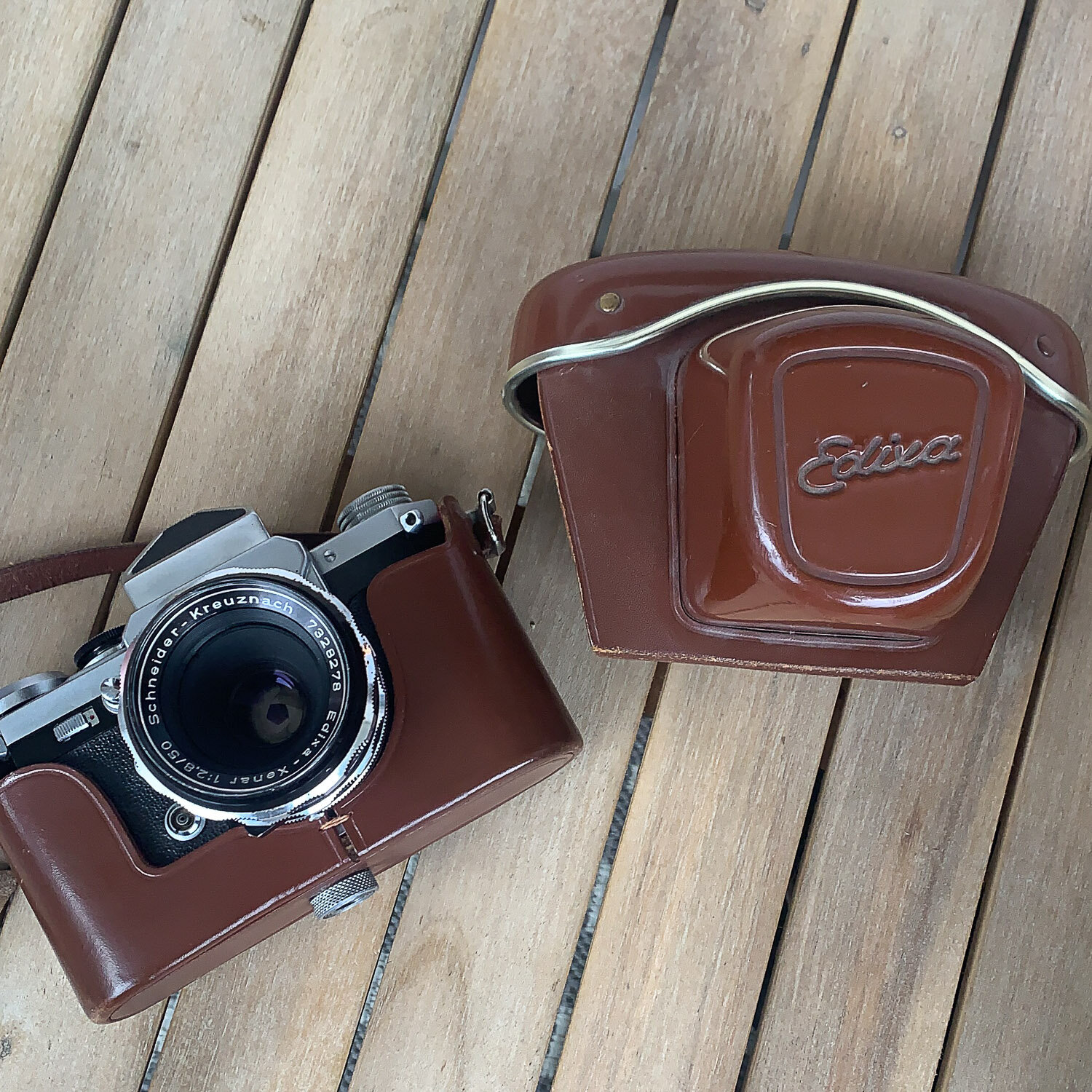After finding a great deal from someone selling their Grandfather’s old Wirgin Edixa camera, I was eager to take this curious and history packed camera through its paces on a recent trip home to Madrid. Here are my impressions.
I try to keep a lid on how many cameras I have in my collection and for the most part I have been quite disciplined in a “one in, one out” approach to buying and selling film cameras. There are a few though, that I will never sell. But as with all camera nuts, I enjoy browsing and reading about old cameras as much as I do taking photographs. In one of my “online camera reading binges” I came across a camera I had never heard of before but apparently was very popular in its day, namely the ‘Wirgin Edixa Reflex B’ camera. As these cameras were very widely produced and do not currently have any mega popular celebrities using them (which unfortunately tends to completely over inflate their price and relative value), they can be found for well under €100.
A bit more about the camera
The Wirgin camera company hails from Wiesbaden in Germany, setup in 1920 by two brothers. It has a bit of a convoluted history - as many other companies did during this time period - and the brothers relocated to the United States during the war. You can read more about the company’s history in a really great and comprehensive article here. There is a really fascinating link to the Rollei 35 camera (hint: it was the same designer). The Wirgin Edixa Reflex B is one of a series of 35mm SLR cameras the company made, and by all accounts one of Germany’s most popular camera designs.
The camera has a removable prism so you are left with a waist level finder view (similar to a Rolleiflex TLR camera albeit much smaller screen). Mine is missing a pop out finder with a magnifying glass, so I am still on the look out for that online.
My version came with a really nice leather case. It is one of the nicest vintage cameras I have seen in a while and sits really nicely along my other analogue cameras.
This camera has a Schneider-Kreuznach 50mm f2 lens, which is a screw mount lens.
View from the top. It has a highly unusual mechanism to set the shutter speed, split between “fast” and “slow” shutter speeds. It is quite quirky but relative easy to get used to. This camera is built like a tank, no plastic in sight, and as such it weighs accordingly.
Waist level shots
I had forgotten how much I enjoy using waist level finders. I have never used one in a 35mm camera though and always assumed the image would be too small to be usable, this is certainly not the case with the Wirgin Edixa camera. The waist level screen is bright and very visible, granted for more precise focusing the optional magnifying loop would be very useful. Luckily I shoot most of my shots at either infinity focus or f8 and above, where everything is on focus regardless.
As with other waist level finders, the view is reversed. Luckily I am used to this from my Rolleiflex & Hasselblad cameras. It can be very confusing at first, especially if you want to move whilst looking through the waist level viewfinder.
Kodak TMax 400 - first roll through the camera on trip to Madrid
I took a couple of different rolls of film on a recent trip to Madrid. I figured I would aim to get some interesting airport and from-the-air shots at the very least. I opted for Kodak TMax 400 for my first roll as I erred on the side of caution for indoor shots with a standard ISO 400.
Side note - I have become increasingly frustrated with the length it takes to upload individual photos on my blog, so I am putting these up as a gallery instead. Another reason is that I would probably run out of commentary: “oh, look, another airplane”.
These are my favourite/most interesting shots from this roll. I quite like the vintage look the 50mm lens provides, although unsure as to why there is a big difference in exposure/grain in some of these. I may have misread the light and under/over exposed on some of them. There is one in particular that has an insane amount of grain.
Ilford Pan F 50 - sharpness even with an old lens
I love Ilford Pan F 50 film but I honestly do not use it enough, partly because it requires so much light. That being said, Madrid in the middle of summer could manage with an even lower ISO. I have always liked how Pan F 50 renders, how sharp and contrasty it is.
These shots were all taken in the north of Madrid in a place called Rascafria. We went up there for lunch and a walk. I don’t think these are my best shots though and for many of them I think a medium format camera would have done them more justice, in particular the ones with trees and the river shot. I particularly like the second photo with the blurred movement of the car but the clear show of the aqueduct.
Kodak Gold 200 - trip down memory lane in Terminal 2 Madrid Barajas Airport
The first benefit of living in a Schengen country is that you do not have to do passport control on the way out of Madrid airport (or on arrival in Munich); the second benefit is that you get to fly out of the old Terminal 2 in Madrid and take in some of the same views you used to when you were a child. The newer Terminal 4 in Madrid is really nice architecturally, but as a passenger it is a bit of a pain due to size and poor space organisation. I figured a nostalgic roll of Kodak Gold 200 would go down well in Terminal 2 and I think I was right!
Overall impressions
I really enjoyed trying out this camera and I absolutely love the waist level finder, so much so that I began looking for other 35mm waist level finder cameras (luckily I did not go down that rabbit hole too long and just used the camera I had with me!). I always find looking through a waist level finder has a 3D cinematic kind of effect to it, it is hard to explain but you feel more engaged with the scene than simply looking through a normal viewfinder. I also enjoyed making the ‘through the viewfinder’ shots in this post and can definitely envisage doing more of that.
This camera is built like a tank, it is quite easy to learn to use although does have a few quirks to it, in particular setting the shutter speed, and of course it is meterless, which makes you rely on an external light meter or your own experience. It also suffers from a number of film transport problems and whilst I didn’t miss any frames as a result I did notice some scratches and other issues on the negatives. Reading up on the history of this camera shows it was mass produced and perhaps without the level of quality control you would expect from other German or Japanese “high precision cameras”. Although for what I paid for it and the fact that it is still working, I will take the risk with the above quirks and issues. It is a beautiful camera, its waist level finder is nice and bright, and if used with care it can produce some really nice images.
I hope you enjoyed this short review. I’ve spent the last few weeks roaming around Bavaria so there is a "‘Bavaria on 35mm film’ series coming up soon on my blog!
See you next time,
Neil














